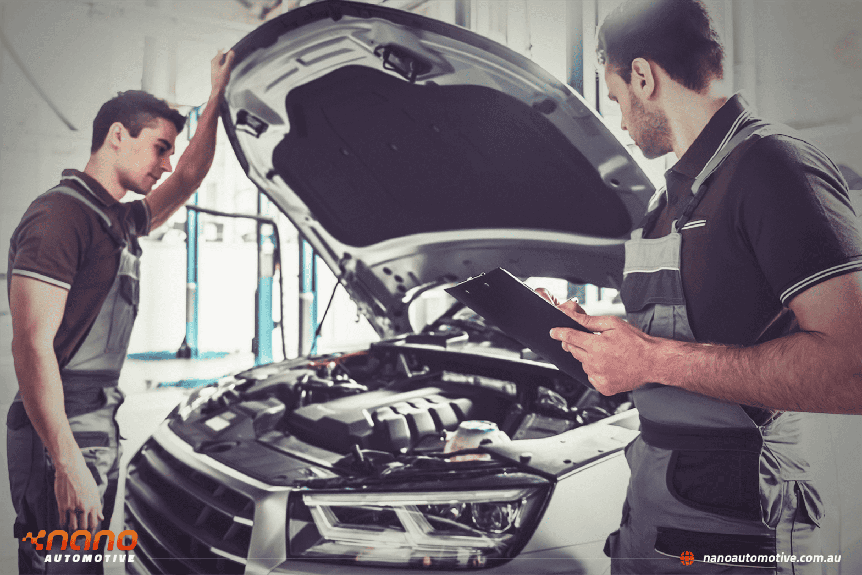Latest Blog
Expert Mechanic Tips on How to Inspect a Used Car
- 13 March 2024
- |
- Service Advice

Buying a used car can be an exciting venture, offering opportunities to find a reliable vehicle at a fraction of the cost of a new one. However, it can also be an unpleasant process, especially for those unfamiliar with what to look for when inspecting a pre-owned vehicle. Whether you’re doing a used vehicle search online or visiting local dealerships, knowing how to conduct a thorough European car inspection is crucial to ensure you’re getting a quality car that meets your needs and budget. In this comprehensive used car buying guide, we’ll provide expert mechanic tips on how to inspect a used car effectively.
Expert Mechanic Tips to Inspect a Used Car
1. Begin with Research
Before diving into the physical inspection of a used car, it’s essential to do your homework. Research different makes and models that align with your preferences, budget, and lifestyle. Consider factors such as fuel efficiency, reliability, and maintenance costs. Utilize online platforms and resources to find used cars in your area and narrow down your options. Additionally, familiarize yourself with common issues associated with specific makes and models by reading reviews and forums. This background knowledge will empower you to make informed decisions during the inspection process.
2. Schedule a Pre-Purchase Car Inspection
While conducting your inspection is valuable, enlisting the expertise of a professional is highly recommended, especially if you’re not well-versed in automotive mechanics. Consider scheduling a pre-purchase car inspection with a reputable vehicle inspection service or car mechanic service. A qualified mechanic will thoroughly assess the vehicle’s condition, identifying any existing or potential issues that may affect its performance or safety. This comprehensive evaluation can provide valuable insights and help you make a confident purchasing decision.
3. Check the Exterior
During the physical used car inspection, start by assessing the exterior of the vehicle. Look for signs of damage, such as dents, scratches, or rust, which may indicate poor maintenance or previous accidents. Inspect the paint quality and consistency across all panels, as disparities could suggest previous repairs. Ensure that all lights, including headlights, taillights, and turn signals, are functional. Additionally, examine the tyres for adequate tread depth and even wear patterns, as uneven wear may indicate alignment or suspension issues.
4. Examine the Interior
Next, shift your focus to the interior of the car. Sit in the driver’s seat and assess the overall comfort and ergonomics. Check for excessive wear and tear on the upholstery, steering wheel, and dashboard, as these may require costly repairs or replacements. Test all electronic components, including the infotainment system, air conditioning, and power windows, to ensure they’re in working order. Pay attention to any unusual odours, which could indicate mould, mildew, or other issues.
5. Evaluate the Mechanical Components
Under the hood lies the heart of the vehicle – the engine and its associated components. Carefully inspect the engine bay for signs of leaks, corrosion, or worn-out parts. Check the fluid levels, including engine oil, coolant, brake fluid, and transmission fluid, ensuring they’re at the appropriate levels and free from contaminants. Start the engine and listen for any abnormal noises, such as knocking, ticking, or squealing, which may signal underlying mechanical issues. Additionally, observe the exhaust for excessive smoke or unusual emissions.
6. Conduct a Test Drive
A test drive is perhaps the most critical aspect of the inspection process, as it allows you to assess the vehicle’s performance and handling firsthand. Before hitting the road, familiarize yourself with the car’s controls and features. During the test drive, pay attention to how the car accelerates, brakes, and handles different road conditions. Listen for any unusual noises, vibrations, or warning lights, which may indicate mechanical or safety issues. Test the brakes for responsiveness and effectiveness, and ensure that the transmission shifts smoothly through all gears.
7. Review Maintenance and Service Records
Before finalizing the purchase of a used car, request to review its maintenance and service records. These documents provide valuable insights into the vehicle’s history, including routine maintenance, repairs, and any warranty work performed. Look for evidence of regular servicing, such as oil changes, fluid flushes, and scheduled inspections. Additionally, verify that any recalls or safety-related issues have been addressed by the manufacturer or dealership.
8. Consider Certified Pre-Owned Cars
If you’re seeking added peace of mind and assurance of quality, consider purchasing a certified pre-owned car from a reputable dealership. Certified pre-owned vehicles undergo rigorous inspections and reconditioning processes to meet manufacturer standards. They often come with extended warranties and additional benefits, providing buyers with confidence and protection against unexpected repairs.
In conclusion, inspecting a used car requires thoroughness, attention to detail, and a bit of mechanical know-how. By following these expert mechanic tips and conducting a comprehensive used car inspection, you can make a well-informed decision when purchasing a pre-owned vehicle. Whether you’re looking for used cars online or exploring local dealerships, investing time and effort into the inspection process will help you find a reliable and quality car that meets your needs and expectations.

